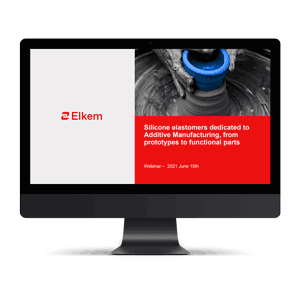- Advanced Manufacturing & Industrial
- What are the different types of Additive Manufacturing?
What are the different types of Additive Manufacturing?
Additive Manufacturing, also referred to as digital 3D Printing, covers a series of processes that enable real physical objects to be built up in layers by depositing materials in three dimensions. It is a disruptive fabrication system, challenging traditional manufacturing modes such as milling, turning and grinding that eliminate materials from a block or an initial rough mold. Additive Manufacturing is more efficient and less wasteful, and therefore more sustainable, since it only uses the materials that ultimately make up the final product. It is also increasingly being used as an alternative to injection molding, sheet lamination, extrusion or calendaring in a wide range of industrial processes.
Another advantage of Additive Manufacturing is that it streamlines rapid prototyping since it can create parts directly from Computer Aided Design (CAD) software, freeing up design to explore multiple innovative solutions. In an increasing number of cases, manufacturers can also make real parts from specially-formulated materials that can be visualized, submitted to stress tests, or fitted to other parts for real-life performance. Thus, Additive Manufacturing is constantly making headway thanks to the combined progress of both digital technology and the development of new materials. For example, it is a key element in the Industry 4.0 process, which integrates end-to-end design-to-manufacturing using connected assembly lines and artificial intelligence. Additive Manufacturing is also being extended to industries such as construction, processing new materials as diverse as natural clays and silicones.
This young and innovative technology also allows manufacturers to make unique customized objects that range from recreational and consumer articles, such as toys, hobby models, reproductions, personalized gifts and artistic creations to more critical applications, such as medical prostheses.
What are the different types of Additive Manufacturing?
ISO (International Organization for Standardization) has categorized seven types of Additive Manufacturing processes to improve understanding and communication between people working in different industries:
UV-Vat Photopolymerization (also known as stereolithography)
A vat of liquid photopolymer resin on a platform is lowered and a laser beam draws a shape, creating a layer of photopolymerization, causing it to harden. This liquid process is compatible with silicone materials, is very accurate, but must be reinforced with structural support provided by other materials, often requiring lengthy post-processing time. It is mostly used to make sophisticated medical devices and high-end leisure products.
Material Jetting
The print head, located above the platform, deposits micro-droplets positioned with charged deflection plates. This method is like an inkjet printer and can use multiple materials, including silicones, polymers and waxes. It is quite time consuming because the reservoir must often be refilled and is mainly used to create realistic models, prototypes or, increasingly, very accurate functional parts in small batches.
Binder Jetting
This method uses powder-based materials, including polymers, ceramics, and metals, deposited by a roller and a liquid to bind the layers. While this is a rapid and versatile method (variable powder ratio and colors), it requires long post-processing time and is not structurally solid. It is used in industrial applications (including aerospace), as well as for making dental and medical devices, luxury applications, etc.
Material Extrusion
This method is often used in personal 3D printers, with material flowing through a nozzle, which is heated and deposited in a continuous stream. The material bonds from one layer to the next, either through melting or natural adhesion. Material extrusion has moved beyond home use and its polymer, plastic and silicone materials provide strong structural support for some industrial applications, particularly in the automotive industry.
Powder Bed Fusion
Like binder jetting, this method uses a powdered material applied with a roller or blade but is fused by a thermal energy source provided by either an electron beam (EBM) or laser (SLM, SLS, DMLS). Powder bed fusion requires a near-vacuum, pre-heated chamber. It can use metal and polymer materials, generating solid support structures, suitable for prototypes and visual models. It is, however, a slow process and is used for creating critical components, such as jet engine parts.
Sheet Lamination
This process offers two variations: Ultrasonic Additive Manufacturing (UAM) using metal materials bound together with ultrasonic welding and Laminated Object Manufacturing (LOM) using paper materials bonded by an adhesive. Layers of different materials are first applied and bonded, and the shape is then cut with a knife or laser beam. This process is relatively low cost and rapid, but initial accuracy is approximate, requiring post-processing. It is mainly used for making prototypes.
Directed Energy Deposition
This process is quite complex, using four or five coordinated axis arms which deposit metal powder or wires, ceramics or polymer materials, melted by an electron beam or laser, around a fixed object, achieving a high degree of accuracy and a choice of finishings. This process is used both to manufacture and repair parts.
To learn more watch our webinar, printing processes and physicochemical properties will be reviewed to show why silicone elastomers are suitable to meet the needs of 3D-printing soft materials.
If you require more information, in our second blog we compared Thermoplastic Elastomers (TPE) to Silicone Elastomers used in Additive Manufacturing. In our third blog we looked at Additive Manufacturing for Industrial Applications. Our fourth blog looked at Medical Applications.
Of course, because Additive Manufacturing is a pioneering and constantly evolving method, we invite our readers to get in touch with experts to clearly define their needs and find the right materials and technology for their specific needs.
